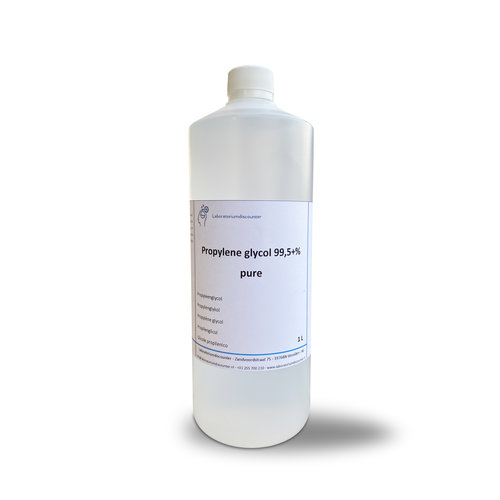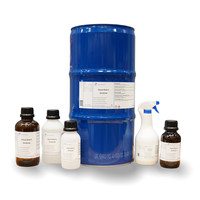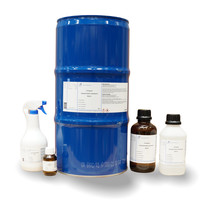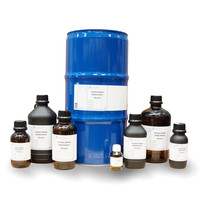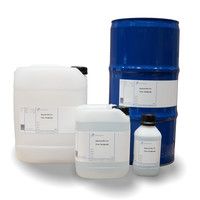You have no items in your shopping cart
Propylene glycol 99.5 +%, pure
- Buy 2 and save 5%
- Buy 6 and save 10%
What is Propylene Glycol?
1,2-propanediol (1,2-propylene glycol), also called (mono)propylene glycol, is a clear, colourless, almost odorless and highly hygroscopic liquid. 1,2-Propanediol is one of the polyhydric alkanols and is chiral at C2, so there is an (R) enantiomer and an (S) enantiomer. Unless expressly stated otherwise, all statements in this article refer to the 1:1 mixture (racemate) of the (R)-enantiomer and the (S)-enantiomer.
What is Propylene Glycol used for?
Due to its dissolving and emulsifying properties, 1,2-propanediol is used, among other things, as a carrier and carrier solvent for dyes, flavors, antioxidants, emulsifiers and enzymes.
In addition to water and glycerine (1,2,3-propanetriol), propanediol, as a component of fog fluids, provides the desired dense fog.
Cosmetics and hygiene
1,2-Propanediol is used in cosmetic products such as skin creams, toothpaste, mouthwash and deodorants as a humectant. It is used as a co-surfactant in multi-component systems and promotes the formation of water-in-oil emulsions. In addition, it can often contribute to a significant improvement in the absorption of various active ingredients. Due to the antimicrobial effect, the use of additional preservatives is often unnecessary.
Heat transfer medium
Like ethylene glycol, 1,2-propanediol is suitable as a heat transfer medium in solar thermal systems. When used as a coolant, the heat capacity ranges from 2.5 to 4.2 kJ/(kg K) for pure water, depending on the addition of water. A 50/50 mixture freezes at −35 °C, boils at 104 °C and reaches a heat capacity of 3.5 kJ/(kg K). When used in food processing refrigeration systems, only propanediol is allowed because it is non-toxic.
-Propanediol use in dairy cattle feeding
For some time now, 1,2-propanediol has also been used as a feed additive for dairy cows. Due to the constantly increasing milk yield that the cows need, which is now around 50 liters / day for high performance dairy cows, the milk yield decreases more and more often after calving. Particularly in the so-called transit phase, the two weeks before calving, and in the first lactation phase, the additional administration of 1,2-propanediol to prevent ketosis and stabilize performance has proven itself within the framework of appropriate feeding strategies and feed rations.
Alternatively, 1,2,3-propanetriol (glycerin) can also be fed. As long as the quality requirements for animal feed are complied with, undistilled raw product quality from fatty acid production can also be used.
-Use in medicine
In veterinary medicine, propanediol (usually in a dilution of 50%) is used for excessive cornification of the skin. It is also used as a carrier for drugs (e.g. ivermectin, minoxidil).
Technical data
Methyl ethyl glycol, 1,2-propanediol
Empirical formula C3H8O2
Molar mass (M) 76.10 g/mol
Density (D) 1.04 g/cm³
Boiling point (bp) 188 °C
Flash point (flp) 99 °C
Melting point (mp) -59°C
WCK 1
CAS no. [57-55-6]
EC-No. 200-338-0
Downloads


